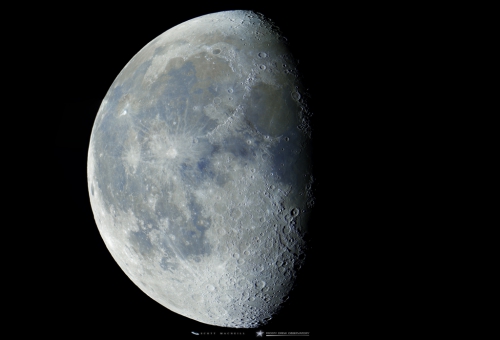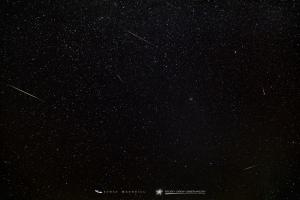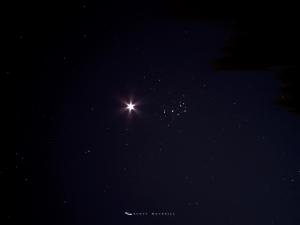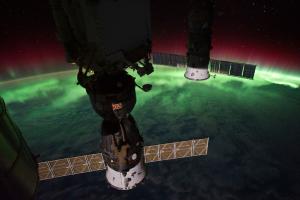
Stargazing Nights
- Where:
- Frosty Drew Observatory
- When:
- Friday November 16, 2018 at 6:00 p.m
- Cost:
- $5 Suggested Donation per person 5 years and older
Tonight is Stargazing Night at Frosty Drew Observatory, and the winter storm is moving out! We can expect clear skies tonight with a spot of wind. Gusts are expected to reach into the 25mph range, though we can work with that if necessary. The 60% waxing gibbous Moon will be with us at start and will set at 11:20 p.m. Though bright, the Moon is in a perfect phase for fabulous views of the lunar surface. Add in that the Leonid Meteor Shower peaks this weekend, and we could have a night of clear skies and a few shooting stars.
We will open the Observatory and Sky Theatre at 6:00 p.m. tonight. In the Observatory, telescopes will start off with views of the gibbous Moon, followed by Mars. As the night progresses, we will direct our telescopes towards binary stars, star clusters, and more. The Moon will block our view of dim objects a bit, though we should be okay with brighter deep sky objects. Additionally, we will grab our first Stargazing Nights view of the fabulous Orion Nebula after 9:30 p.m., as well as an early view of Comet 46P/Wirtanen around 10:00 p.m. We will stay open until 11:00 p.m., possibly later if the skies stay awesome and the wind subsides.
Overall, tonight looks like a great night. Coming off the tails of two consecutive weeks of terrible weather on Friday night has us in desperate need of an astro-fix, and tonight will bring it. The Moon will be bright enough to obscure dimmer views, though at 60% waxing gibbous, the Moon is in a perfect phase for observation. We are also taking a first glance at some amazing objects tonight, which alone, make this a fabulous time to be out. Temps will not be brutal, but it will be cold. Check out our primer on how to dress for cold nights at the Observatory, then gear up for a fabulous night out under the stars at Frosty Drew Observatory.
--------------------------
Weekly Happenings
Scott MacNeill
The past several weeks have been a great time to be out spotting meteors. Though no specific intense meteor shower has been occurring, numerous small meteor showers have been happening with overlap. This overlap of showers has produced a nice increase in regular meteor activity by about 10-20 meteors per hour on clear, dark nights, compliments of the Orionids, N. Taurids, S. Taurids, and Leonids. Well overnight November 17-18 (Saturday-Sunday), the Leonid Meteor Shower peak will occur. Now the Leonids are super famous, and just the mention of the shower usually brings a wave of excitement in anticipation of the fabled Leonid meteor storms of the past. Though don’t be misled! The Leonids are a rather janky shower, producing a mere increase of up-to 15 meteors per hour under perfect viewing conditions (no clouds, no Moon). This crazy reputation that the Leonids has comes from Comet 55P/Tempel-Tuttle, which leaves behind a stream of comet debris that intersects our orbit. Parts of this stream are quite dense, and every 33+ years Earth will pass through one of these streams, which give us that outburst of intense Leonid meteor rates and meteor storms that you generally associate with the Leonids. At Frosty Drew Observatory, we have observed that, outside of the outburst cycle, more non-Leonid meteors a visible during the Leonid peak than actual Leonid meteors. Regardless, it’s still a meteor shower, and when mixed with the other showers, it’s certainly worth checking it out. If setting out, you want to be setup for the morning hours after the Moon sets, and when the constellation Leo is above the eastern horizon. Leonid meteors will radiate from the constellation Leo, which is where they get their name from. Lay on your back and look towards the zenith (top of the sky) and see how many meteors you spot. At this time, weather is questionable, with a possible slight increase in clouds in the morning hours on Sunday. For the nostalgic readers, check out the Frosty Drew Observatory astronomer log entry for the 2001 Leonid outburst. The Leonid entry starts about 1.5 pages down, with the last three paragraphs offering the best descriptions of the outburst.
Over the past week, and continuing through the weekend, Venus and Spica have been putting on a fabulous show for early morning sky watchers and eastbound commuters, with stunning conjunctions. Though Thursday, and Friday morning were probably the best times to view, tomorrow morning (Saturday, November 17) will still be fabulous, with Venus sitting about 1° east of Spica. Spica is the brightest star in the constellation Virgo, and resides at about 250 light years distant from Earth. Spica is about 10 solar masses (10 times the mass of the Sun), which makes it capable of undergoing a supernova when its final days arrive, and at 250 light years distant, it takes the cake as the closest supernova candidate to Earth. Conjunctions of the two will continue with the amount of visible separation increasing nightly. On the morning of Thursday, November 22nd, the pair will have reached 2° of visible separation. If setting out Sunday morning to spot Leonid meteors, or just getting ready for your day, take a moment and enjoy the fabulous conjunction. The pair will become visible over the ESE horizon around 4:30 a.m., with spectacular views happening between 5:30 – 6:00 a.m. every morning this week.
This coming Wednesday, November 21, 2018, we’ll welcome the International Space Station (ISS) back to nighttime skies over the USA. Continuing until December 16, 2018, the ISS will make visible evening passes daily. Though acceptably good passes will not start until Friday, November 23rd, you can still get out on Thanksgiving evening (Thursday, November 22nd) and wow your guests with your astro prowess by pointing out a super quick station sighting:
Starting at 6:50 p.m. in the SW, 10° above the horizon, rising to 14° before dropping into orbital sunset (when the ISS enters Earth’s shadow and quickly fades from our view). This pass will last about 31 seconds.
If you want to learn a bit about why the ISS is only visible periodically during the year, or just want to brush up on your ISS geek cred, read up on how the ISS orbits Earth. For pass times and predictions, visit our homepage for times applicable to Southern New England and largely the Northeast. For pass times specific to your location, check out NASAs Spot the Station.
For the last couple of weeks we have been going on about Comet 46P/Wirtanen, which will make a nice addition to the holiday skies. Though earlier this past week, another comet was discovered, Comet C/2018 V1 Machholz-Fijikawa-Iwamoto (V1). This newly discovered comet is likely a long period comet that originated in the Ort Cloud (furthest edge of the Solar System, about 1 light year radius centered on the Sun). The comet has been brightening excessively and is now a binocular visible comet. At this time, you can still catch a view of comet V1 in the early morning sky before sunrise, though as the comet continues to approach the Sun for its December 3rd perihelion (closest to the Sun), we are losing our view to the overwhelming glare of the Sun. If out in the morning this weekend checking out the Leonid shower, Venus-Spica conjunction, or just geeking out with the sky; grab your binoculars and scan around the constellation Virgo, you just may sneak a peek at Comet V1. Here is a finder chart of the comet’s location over the next few nights.
Have a Happy Thanksgiving from all of the astro-geeks at Frosty Drew Observatory!
-Scott




